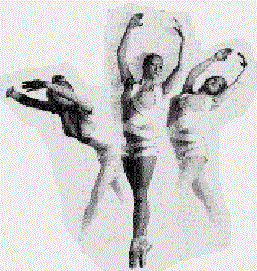"During a recent school screening, it was determined
that your son/daughter may have a condition called scoliosis, or
curvature of the spine. Please consult your physician for further
information and available treatment options."
For most parents, this news can be both alarming and confusing,
especially when a child appears to be both healthy and active at
the time of diagnosis. Clearly, routine spinal screenings have done
much to increase the population’s awareness of scoliosis in
general, but serious questions rarely arise until a parent discovers
that his or her child may have the disorder.
What’s the best way to treat scoliosis?
This is the first and most obvious question parents ask following
an initial diagnosis. The answer is determined by such factors as
age, gender, and degree of curve and usually involves the following
three options: (1) watch and wait, (2) fit the child for a rigid
brace, or (3) schedule spinal surgery. Regardless of the preferred
option, however, parents usually experience some feelings of guilt
and fear related to their treatment of choice. For example, those
who choose to watch and wait often wonder, “What if we do
nothing, and then the problem gets worse?” Others, however,
who opt to have a child fitted for a rigid fitted brace still worry
because correction always depends on compliance: “Will my
child feel too embarrassed to wear the device?” “Will
it restrict my child’s motion to the point of altering personality?”
“What will happen to my child’s back if he or she decides
to stop wearing it?” These are serious questions, to be sure.
But the final option, invasive surgery, causes parents the greatest
anxiety, and rightfully so, with questions such as: “How dangerous
is this surgery?” “What’s involved in my child’s
post-surgical recuperation?” and “Can our family afford
this investment of both time and money at this point in our lives?”
Unfortunately, there are no easy answers to these questions. And
regardless of professional advice, parents still worry about the
choices they have made. Recently, however, a new alternative has
been announced, and for countless children diagnosed with minor
idiopathic scoliosis, this treatment may be the one that some parents
have been waiting for.
SpineCor: An Innovative Approach to Corrective Bracing
On September 16, 1998, at an orthopedics symposium in New York
City, Dr. Christine Coillard and Dr. Charles Rivard, pediatric surgeons
from Sainte-Justine Hospital in Montreal, presented clinical findings
on a promising, new, therapeutic approach for idiopathic scoliosis.
As pediatric orthopedists, Drs. Coillard and Rivard had long concurred
that bracing was the most conservative option available for children
with minor scoliosis. However, they also realized the challenges
presented by a child’s growth patterns as well as his or her
physical and psychological need for normal mobility. Their studies
were based upon these challenges, and as a result of their research,
the SpineCor bracing system evolved. Together with their team of
researchers from anthropology, biomechanics, and physiotherapy they
seek to minimize the three dimensional deformity of scoliosis by
addressing what they believe to be four important aspects of the
condition, deformation of the spine, postural disorganization, muscle
dysfunction, and unsynchronized growth.

What’s different about the SpineCor brace?
Primarily, the SpineCor bracing method is an adjustable, non-invasive
technique that provides flexible, inconspicuous correction that
continues as a child moves and grows. Unlike traditional rigid systems,
the SpineCor brace consists of four major components: (1) a plastic
pelvic base, (2) a cotton bolero or vest, (3) tie bands and (4)
four adjustable or “dynamic” bands. Proponents of the
brace, distributed by Biorthex, Inc., state that this unique combination
of components is simple to use, comfortable to wear, and most importantly,
effective in its results. The goal of the dynamic brace is to maintain
and improve spinal deformity while re-educating the body to return
to a more normal posture.
Does the SpineCor Brace work for everyone?
None of the current braces will work for everyone, and SpineCor
is no exception. Biorthex states that results so far are similar
to other braces for curves greater than 30 degrees and “the
best results” occur with those patients who are skeletally
immature with Cobb angle curvatures of less than 30 degrees. While
determining the initial degree of measurement is essential to the
success of the SpineCor system, the growth velocity of the curve
is an even more important factor to consider when choosing the SpineCor
brace. Specifically regarding such rates of growth, children experience
three major growth spurts that can impact the severity of scoliosis:
infantile (before age 2), juvenile (between ages 5 – 10),
and adolescent (age 11 or the onset of puberty). Based upon clinical
studies with children of all ages, the SpineCor system appears to
provide greatest benefit to children between the juvenile and early
adolescent stages, which generally occur between the ages of 6 and
11. In addition to the patient’sage, two other factors also
tend to influence the success of this bracing alternative. As such,
children who are either clinically obese, or girls who have already
begun menstruating, would not be considered primary candidates for
this type of treatment.
How can a patient get started with the SpineCor system?
Because the system is new, not all physicians are currently equipped
to treat patients with the SpineCor brace, but information is readily
available to qualified practitioners who routinely diagnose idiopathic
scoliosis. The orthopedist may use the digital imaging system and
assistant software in their office, or arrange an appointment with
either an orthotist or a physical therapist to take the initial
body measurements and to arrange for follow-up visits. The brace
will then be fitted, and the patient is taught how to use it effectively.
Generally, to achieve maximum results, the brace should be worn
during the day and may be worn for up to 20 hours at a time. Therapists
may offer suggestions for improved body mechanics while wearing
the brace, and follow-up visits may be needed every 3 to 6 months,
depending on the patient’s growth, to make the necessary adjustments
to the elastic bands.
What are the expected results of using the SpineCor brace?
Data from clinical trials presented at the New York symposium in
September 1998, revealed the following findings. Specifically, from
August 1995 to the present, 41% of patients who met the diagnostic
guidelines of skeletal immaturity with a progressive curvature of
less than 30 degrees have experienced improvement using the SpineCor
system. Among these patients, their curvatures were reduced by 25%
to 50%. The study also indicated that another 41% of the patients
showed no improvement after using the SpineCor brace, but to date,
their curvatures have remained stable. Only 4% of the patients treated
with the SpineCor brace noted an increase in their initially diagnosed
curvatures. These results so far are very positive, however more
long term "out of brace" data will be needed to conclusively
show the effectiveness of SpineCor.
How can I receive more information about the SpineCor bracing
system?
As with any new mode of treatment, it is always best to begin by
speaking with your family physician or a referred specialist. This
system shows great promise for young children with mild curvatures,
and it will be considered among the available scoliosis treatment
alternatives. However, you may wish to review the product information
before deciding to use the SpineCor system. In order to make the
most informed decisions possible, you may contact the NSF office
to ask about the device, or you can contact Biorthex, Inc. directly
by calling (514) 382-4800 or visit their website at www.biorthex.com.
The Pioneers of the SpinCor Brace

Dr Christine Coillard, Clinical Assistant Professor, Department
of Surgery, University of Montreal, and Pediatric Orthopedic Surgeon

Dr Charles H. Rivard, Pediatric Orthopedic Surgeon and Head of the
Department of Surgery at the University of Montreal
Back to Medical Updates